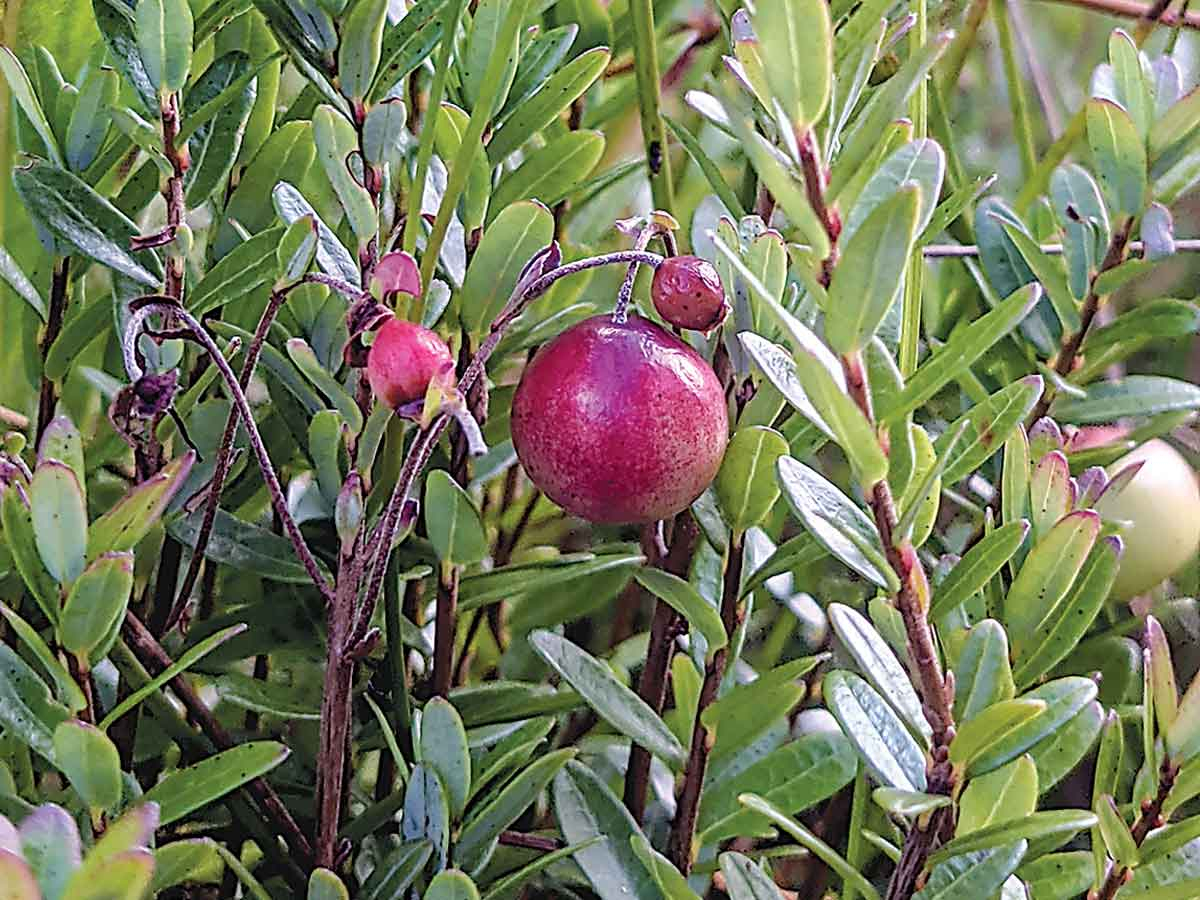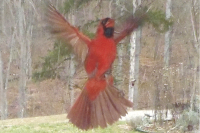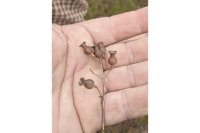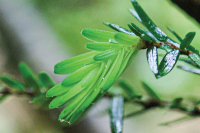Notes from a plant nerd: Leftover Cranberries
 Western North Carolina is home to the southernmost populations of wild cranberry. Adam Bigelow photo
Western North Carolina is home to the southernmost populations of wild cranberry. Adam Bigelow photo
Many of us may be tired of cranberries by now, having eaten our fill, and then some, at our recent fall harvest celebrations. And whether you were on team fresh cranberry sauce, or you prefer the canned cranberries, you ate the fruit of a plant native to North America called large cranberry (Vaccinium macrocarpon).
When most people think about cranberries, they imagine large bogs across Maine and New England. They might imagine agricultural fields filled with water and the round red berries floating in them. They don’t think about Southern Appalachia. And yet, there are healthy cranberry bogs around here, found at the highest elevations of Jackson, Macon and Haywood Counties, including one population that many hikers walk by unknowingly all season long along the Ivestor Gap trail at Black Balsam, off the Blue Ridge Parkway.
So, what are they doing here in the South, these cranberries, and other associated high-elevation plants found in the Balsam Mountain ranges? They truly are leftovers. They are remnants, left over from the last glacial period, or ice age, called the Pleistocene era which ended 15,000 to 25,000 years ago. And while the Pleistocene glaciers did not come this far south, ending around the mid Great Lakes area, they pushed large amounts of soil, plants and seeds ahead of them. They pushed a whole forest type southward.
The boreal forest, or taiga, is the ecosystem type that rings just below the Artic Circle, encircling the globe in the Northern Hemisphere. Composed of mostly evergreen, cone-bearing trees like pines (Pinus spp.), spruces (Picea spp.) and firs (Abies spp.), boreal forests are where you find cranberry bogs. And the same is true here in Southern Appalachia in the highest elevations of the Balsam and Great Smoky Mountains. The dark green trees known to mountainfolk as balsams or firs are remnants of that same ice age that left us with cranberries.
It is said that driving up in elevation onto the Blue Ridge Parkway is like driving north to Maine or Canada, at least biologically. You can find Northern flying squirrel, blue bead-lily (Clintonia borealis), mountain-ash (Sorbus americana), Canada mayflower (Maianthemum canadensis) and witch hobble (Viburnum lantanoides), all of which are more commonly found in the Northeastern U.S. And, you can find cranberries, if you know what to look for.
Our images of cranberries growing in standing water come from an agricultural technique of flooding the fields to reduce weeds, and to harvest the berries for commercial production. And while they don’t really grow in a pond, they do grow in wet and boggy areas. Technically, the cranberries of Southern Appalachia are growing in fens. A fen is described as a type of wetland fed by ground or surface water dominated by peat moss, one of many different types of mosses in the genus Sphagnum. And, while constantly wet, they don’t look like ponds or lakes, and many won’t notice the small, evergreen leaves of cranberry, nor the pink flowers with petals that curve back in the spring.
Related Items
And all but the most observant hiker will often fail to notice the large ripe fruit, even though they see them on their dinner table every year. That’s ok, because these berries are better served to birds, than accompanying one as a side dish. There aren’t that many populations left in the South, and as the climate continues to warm due to human activity, they are at great risk of going away. And there’s not much chance that they’ll rise from the grave, like zombies. Nor will there be any leftovers once the nights get too warm.
(Adam Bigelow lives in Cullowhee and leads weekly wildflower walks and ecotours through Bigelow’s Botanical Excursions. This email address is being protected from spambots. You need JavaScript enabled to view it..)













